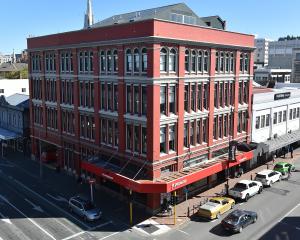A couple of ''quiet ones'' has turned to deathly silence in some bars since lower drink-driving limits came into force late last year. Dan Hutchinson talks to bar owners and the police about Dunedin's changing social patterns.
Talk to bar owners about the effect of lower drink-driving limits and they mostly tell the same story - the drinking culture has changed.
Acting road policing manager for Dunedin Senior Sergeant Ed Baker said it was too early to draw any conclusions but ''anecdotally'' people had changed their behaviour to match the new rules.
In the coastal Otago area (including Dunedin), just 10 people were caught driving within the new 250mcg-400mcg range in December and 12 in January.
''Just talking to people it seems like the message is being taken on board for sure. I don't know how that is affecting the hospitality industry.''
''Dead'' is how Mornington Tavern owner David Miskimmin describes Monday through to Wednesday nights since the new laws came in.
Regulars used to come in for a bottle or two most nights of the week but they were now holding off and spending all their money later in the week.
''Come Thursday - boom - because the boys have been starved for a few nights ... by hell, come Thursday, they don't bring their car here, they're into it.''
He likened it to the ''6 o'clock swill'' phenomenon when 6pm closing was mandatory for liquor outlets in New Zealand from 1917-1967.
He said he was introducing new attractions such as darts and pool nights earlier in the week to get people back in the door.Hospitality New Zealand Otago Branch president Mark Scully - also owner of the Speight's Ale House in central Dunedin and Salt Bar and Cafe in St Clair - said drinking trends had changed.
At the Ale House, there had been a ''swing to moderation'' and the new 2.5% alcohol beer had shot up to be their third most popular beer.
He said people were drinking less and establishments should try to make up the reduction in beverage sales by selling more food.
''Those who might have had two jugs of beer in the past, they might now have a jug, a pint and a bowl of chips.''
He said there a few new wines coming on the market that were in the 7% to 10% range.
''I am sure the traditionalists will tell you that a chardonnay has got to be 12.5% and cab' sav' merlot has got to be 14% but things change, brewing processes improve.''
Waihola Cafe and Bar owner Belinda Collins said people were simply drinking less than they had been before, including diners.
She said rural people were already very aware of the dangers of driving after drinking and the main difference she had noticed was people drinking less.












